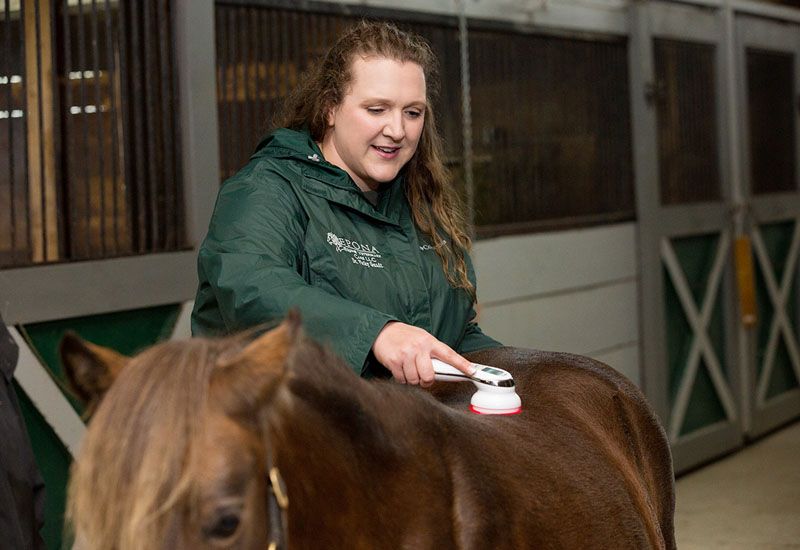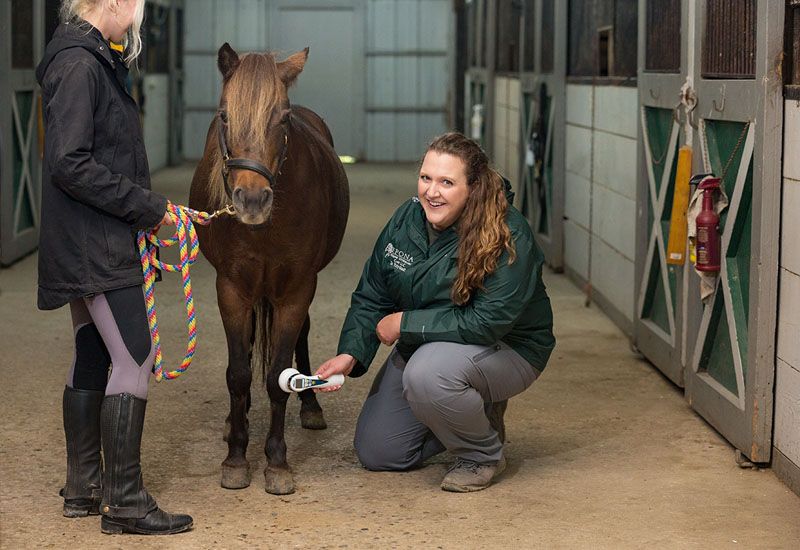Equine Therapy for Children: Psychological and Behavioral Assistance Discussed
Equine Therapy for Children: Psychological and Behavioral Assistance Discussed
Blog Article
Laser Therapy in Equine Treatment: A Modern Approach to Improving Steed Wellness
Laser therapy has actually arised as a critical strategy in equine therapy, making use of focused light energy to foster cellular repair work and expedite healing from a range of ailments. This non-invasive method is particularly efficient in managing musculoskeletal injuries, injuries, and inflammatory problems, significantly boosting general horse health and wellness. By promoting mitochondrial activity and enhancing ATP production, laser treatment not just boosts blood circulation however additionally supplies significant discomfort alleviation. As this ingenious therapy continues to obtain traction, it opens up appealing possibilities for dealing with chronic conditions like arthritis and hoof issues, signifying a transformative change in veterinary care. What makes this method especially compelling?
Understanding Laser Treatment
Laser therapy, a non-invasive treatment modality, has actually obtained significant traction in equine medicine due to its effectiveness in promoting recovery and discomfort relief. This innovative healing technique uses focused light power to penetrate cells, cultivating cellular repair service and regrowth. The underlying mechanism includes the stimulation of mobile mitochondria, bring about increased production of adenosine triphosphate (ATP), the power money of cells. Enhanced ATP levels quicken cells repair processes and lower swelling, making laser therapy specifically reliable for treating musculoskeletal injuries, injuries, and various other inflammatory problems in horses.
There are a number of kinds of lasers used in equine treatment, each with specific wavelengths and power outcomes tailored to different therapeutic requirements. Low-level laser therapy (LLLT), additionally recognized as chilly laser therapy, employs lower power levels to promote cell feature without creating thermal damage. High-intensity laser treatment (HANDLE), in comparison, utilizes greater power degrees to accomplish deeper cells penetration and more considerable restorative effects.
Veterinarians use various laser tools and techniques relying on the problem being dealt with and the wanted depth of cells penetration. Appropriate training and competence are critical for making certain the risk-free and reliable application of laser therapy, thereby maximizing its restorative possibility while reducing risks.
Benefits for Horse Wellness
With a solid understanding of how laser treatment functions, it is necessary to explore its countless advantages for equine health. Among the primary benefits is its ability to speed up tissue repair work and cell development. By stimulating mobile feature, laser therapy advertises faster injury recovery and aids in the regrowth of damaged cells. This can be specifically helpful in minimizing healing times for steeds dealing with injuries.
In addition, laser treatment has actually been revealed to improve circulation, therefore improving blood flow to impacted areas. Improved circulation ensures that essential nutrients and oxygen are supplied extra effectively, assisting in the recovery process. In addition, laser treatment's anti-inflammatory results assist in decreasing swelling and pain, which is crucial for the total wellness of the equine.
Pain monitoring is another significant advantage. By releasing endorphins and blocking pain signals, laser therapy supplies effective, non-invasive alleviation from both severe and persistent pain. This can contribute to enhanced flexibility and high quality of life for the animal.
Lastly, laser treatment is a non-invasive therapy alternative, minimizing the risk of issues associated with even more intrusive treatments. Its convenience and effectiveness make it an invaluable tool in modern equine vet medicine.
Common Problems Treated

One more common problem treated with laser therapy is joint inflammation. Furthermore, laser treatment is utilized in the management of wounds.
Horse respiratory system problems, such as see here recurrent airway obstruction (RAO), additionally react positively to laser therapy. The anti-inflammatory residential properties of the therapy aid in minimizing respiratory tract swelling, hence enhancing breathing function. Additionally, laser treatment is useful in treating unguis troubles, consisting of laminitis and abscesses. By boosting circulation and decreasing pain, it supports quicker healing.
Procedure and Safety
Carrying out laser therapy in equine treatment involves a precise treatment to ensure both efficiency and safety and security. Equine Therapy. The procedure starts with a thorough veterinary analysis to identify the viability of laser therapy for the horse's particular condition. When considered ideal, the treatment location is prepared by cleansing and, if required, clipping the hair to improve laser penetration
The practitioner needs to select the appropriate type of laser, generally a low-level laser (LLLT) or a high-power laser (HPL), depending upon the condition being dealt with. The laser gadget is after that calibrated to the suitable wavelength, power, and duration setups. During the application, the specialist relocates the laser over the targeted location in an organized fashion, making certain constant and even direct exposure.
Safety procedures are strictly adhered to, consisting of the use of protective eyeglasses for both the professional and the equine. Furthermore, it is important to monitor the horse for any type of signs of pain or unfavorable responses throughout the procedure. Post-treatment, the equine is typically provided a duration of rest to permit the therapeutic impacts to manifest.

Future of Equine Laser Treatment
As advancements in vet medicine remain to unfold, the future of equine laser treatment holds substantial assurance. Arising technologies and deeper clinical insights are established to fine-tune and broaden the applications of laser therapy for horses. One of the most expected growths is the assimilation find this of sophisticated imaging methods that enable much more precise targeting of afflicted tissues, consequently boosting therapeutic end results. Additionally, the advancement of mobile and straightforward laser tools is most likely to make this treatment much more available to a broader variety of professionals and horse owners.
Moreover, ongoing research study into the molecular and mobile devices of laser treatment will likely generate enhanced protocols tailored to details problems, improving efficiency and decreasing therapy times. Individualized therapy strategies based on hereditary and biochemical markers could end up being a fact, making sure that each equine receives the most appropriate and reliable treatment.
Moreover, regulatory advancements and standardization of methods will certainly improve the reliability and go to website reliability of laser therapy in equine practice. Equine Therapy. As these technologies proceed to emerge, equine laser treatment is poised to become a crucial element of veterinary care, offering enhanced recovery and improved quality of life for horses internationally
Verdict

Report this page